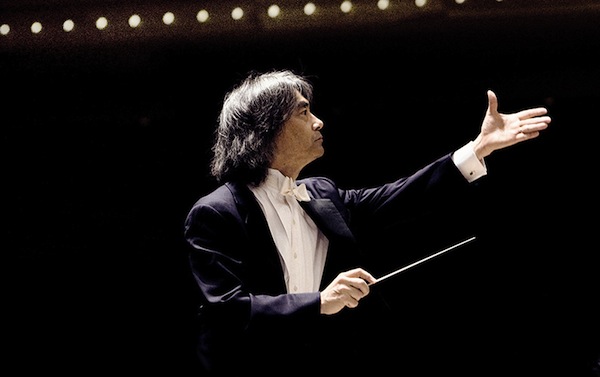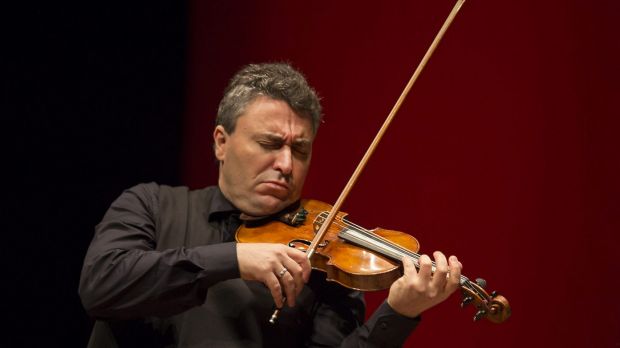A mixed outing for Vengerov but Montreal Symphony impresses at Carnegie Hall

Kent Nagano conducted the Orchestre Symphonique de Montréal Wednesday night at Carnegie Hall. File photo: Felix Broede
The “comeback” is one of the music world’s favorite storylines—the superstar soloist who drops off the map and suddenly reappears is bound to draw crowds for the sake of curiosity, if nothing else.
Maxim Vengerov made an appearance in February’s Chinese New Year Concert with the New York Philharmonic, so Wednesday night’s appearance with the Orchestre Symphonique de Montréal was not his first trip back to New York. Still, a performance of a pantheonic romantic violin concerto with a respected orchestra at Carnegie Hall is a particularly notable occasion for a violinist trying to reestablish his career.

Maxim Vengerov
Vengerov’s performance of the Brahms Concerto wasn’t especially accurate, though that can be forgiven for the sake of a bracing interpretation. But rather than offer a piercing reading of Brahms’s passionate masterpiece, he crooned mercilessly through the first movement, taking a ponderous tempo that made his reading feel almost blasé. Many fine musical ideas were covered up by slick rubato and syrupy phrasing, to say nothing of the dripping portamento he slathered on almost every shift. Vengerov played a colossal but scattered cadenza–presumably of his own devising–jumping relentlessly from one idea to the next with little time to develop any of them, and not ending until every last theme, primary to quaternary, had been called out.
Kent Nagano and the Montréalers were a stark contrast, giving a rendition of the score that was sonically crisp but sacrificed nothing in the way of drama. They lost their balance in the Adagio, when bassoons and horns blared for attention during what ought to have been a dreaming oboe solo, while Vengerov once again overplayed the solo part, smothering its angelic sighs.
And then, out of nowhere, the finale was absolutely brilliant: festive, triumphant, playful. At last, Vengerov’s playing showed more zest than schmalz, making the Allegro giocoso into a foot-stomping celebration. His encore was impressive as well, a sublime rendering of the “Méditation” from Massenet’s Thaïs. Lovely, sighing, and unpretentious, it was effective in large part because Vengerov showed restraint, rather than weighing the piece down with excessive embellishment.
The evening began with the New York premiere of a work commissioned by Nagano, Samy Moussa’s A Globe Itself Infolding, an eleven-minute tone poem for organ and orchestra. The title, taken from William Blake’s Milton, is inscrutable, but the piece itself shows talent—its icy opening, thick with tension, is almost cinematic, slowly developing into a rich, creeping mass. The composition grows ever darker and more dramatic, culminating in a thick weave of strings with a dazzling organ descant on top. Music with a prominent organ part is sadly always at a disadvantage at Carnegie Hall, where an electronic roll-away substitutes for the real thing; nonetheless, Jean-Willy Kunz played the part with gusto.
The meat of the program was Bartok’s Concerto for Orchestra, always a fine candidate to show off a visiting orchestra to an unfamiliar audience. Their performance in this touchstone work showed the OSM to be an excellent ensemble. They weren’t always in perfect unison, but there was an overall freshness to their sound, and the many solos throughout the piece impressed, showing individual characters that played beautifully off one another.
Cheeky, tart humor characterized the “Giuoco delle coppie”; from the jeering sound of the muted trumpets to the playful clucking of the reeds, there’s something delightfully wacky about the colorful interjections of the various pairs of instruments in this movement, and Nagano’s musicians played up the wry wit of the music, offering a stark and welcome contrast to the utter seriousness of the Elegia.
The Montréalers began the “Intermezzo interroto” with a stunning blast of burning strings, and maintained admirable cohesion through the many twists and turns of the music thereafter. The crescendo at the start of the Finale was stunning, building ever so gradually from a whisper, to a murmur, a buzz, a hum, and finally a rushing excitement. After losing their way in the fugal passages, the orchestra rallied to a thrilling, blaring finish.


